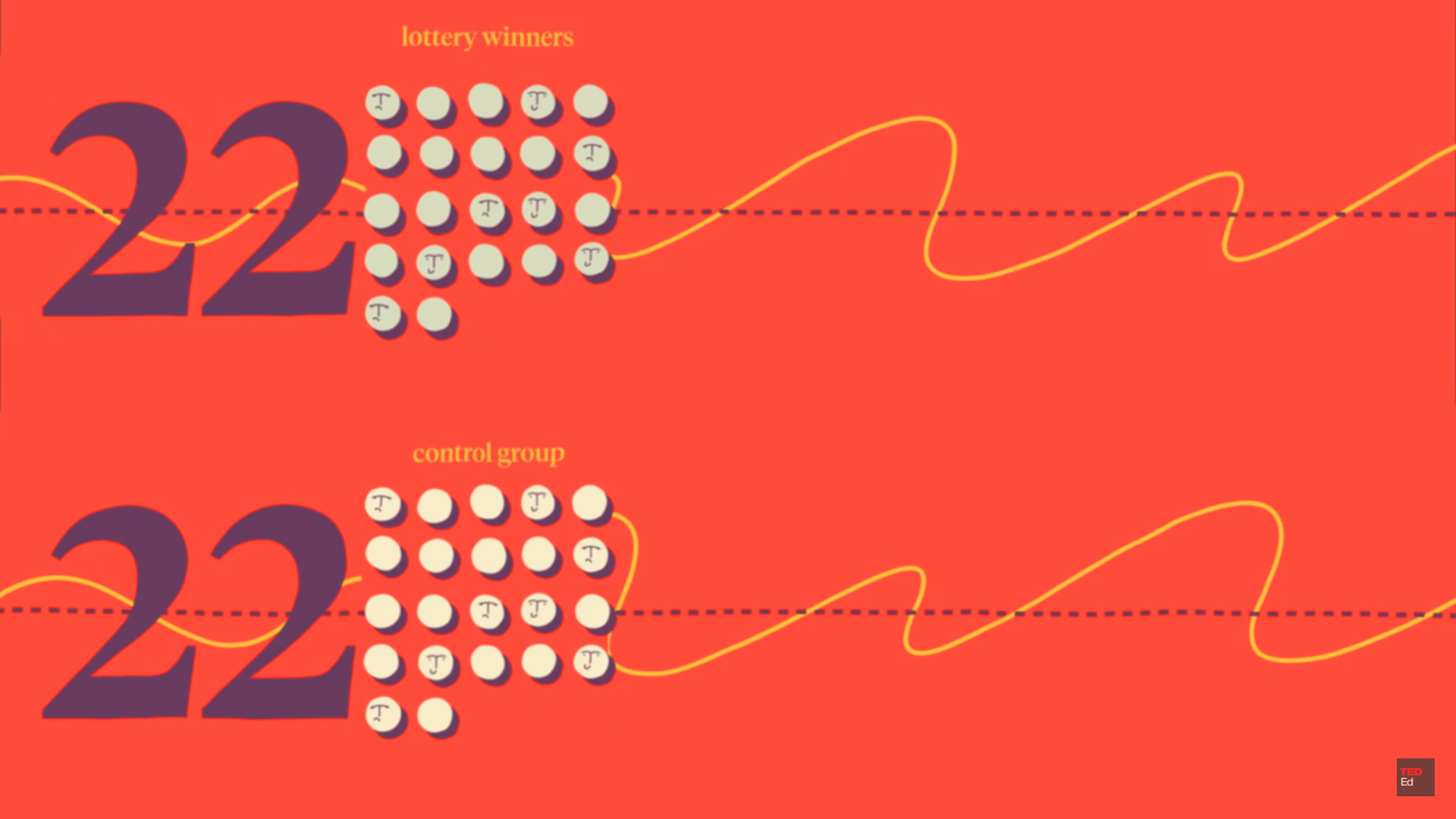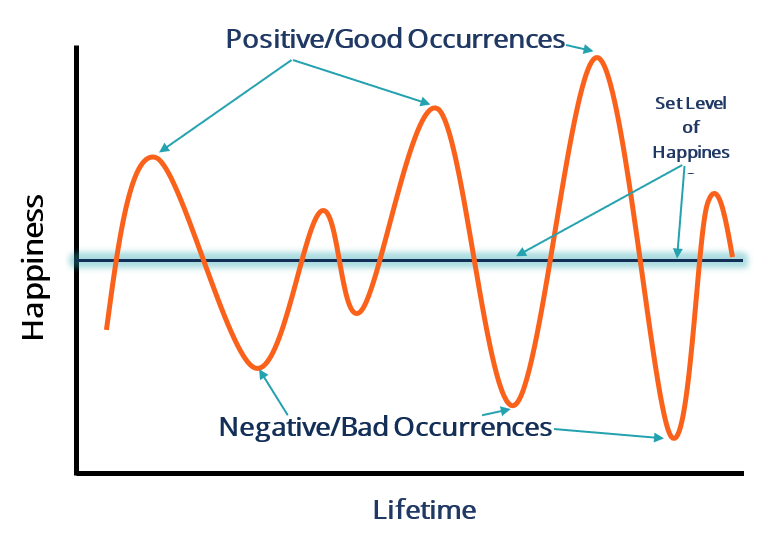Hedonic Treadmill

I distinctly remember the question that the IELTS examinator recently asked me for the speaking part: “do you believe that money can influence happiness?”. It was a question that was so interesting to me that I stopped thinking about talking in a perfect English manner and focused on the content of the answer.
In my high school philosophy book, inside the chapter about Aristotle, there was a paragraph that can be summarized as: “above the level where all the basic needs are satisfied, there is no correlation between money and happiness”. I agreed with that statement, but reflecting on the IELTS question, I discovered another interesting point of view: the happiness level tends to be subject to mean reversion.
I also experiment it in my life: there is a sort of stable happiness level. As I wrote in my previous posts on expectations and patterns, impactful life events and small daily ones make us swing in a predictable cycle. Even if, as humans, we tend to say: “this time is different” and “the new year will be much better" (I highly advise translating the composition of Leopardi, it is worth it), the reality is that there is a stable pattern in its essence. Adjusting from the ups and downs, we come up with a pretty steady line happiness level, as it is masterfully explained in this TED-Ed video.

The crucial question is how to increase the adjusted level of happiness. Chatting with a dear friend we came up with this motto: “high ambitions, low expectations”. If one has a goal, trying for it minimizes future regrets while maximizes the exposure to possible positive outcomes. If not, one can always say, “I tried”, and keeping the expectations low will make it not too much of a big deal.
By doing a proper risk evaluation, then most of the time we will discover that there is really not much to lose and everything to gain, which can already push the average happiness a bit up! 🔝
